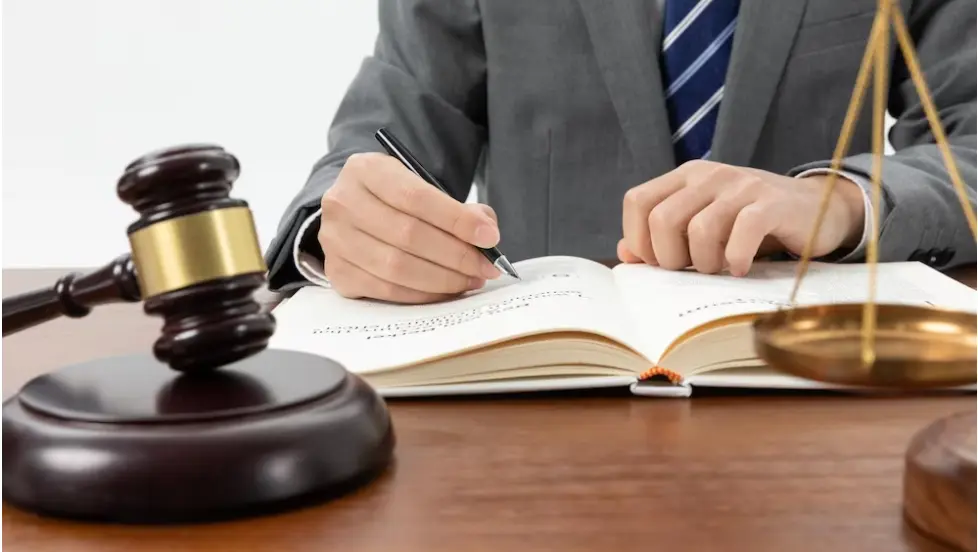
As construction contracts provide for a set of duties and obligations to be fulfilled by both the engineer and the contractor, of course, it is worthwhile to shed light on such duties and obligations, and the arising shared responsibilities of both the engineer and the contractor for construction defects. These duties and obligations can be summarized as follows:
1. Duties of Engineer and Contractor in Construction Contracts: -
- Duties of Engineer in Construction Contracts: -
The duty of the engineer falls within the independent activities. Some legal scholars defined the contract made by the latter as the information contract and as a “Contract with Advice.” The obligation to provide advice is one of the most important duties of the engineer, being the direct person before the employer to resort. He, the engineer, then carries out designs and measurements as a second obligation on his part, to start implementing the project or the work to be completed. Then comes the third obligation, which is the obligation to warranty when the applicable requirements are met.
- Duties of Contractor in Construction Contracts: -
The contractor shall first complete the work required on his part under the terms of the contract between him and the employer. This is followed by a second obligation, which is the contractor’s obligation to take the due diligence during that completion, in addition to the contractor’s obligation to provide the contract works and the required tools and equipment. The contractor shall take into account the art assets in using the material provided by the employer.
Often, though, when the project is delivered after being completed, construction defects may appear or may not appear. Their presence leads to the total or partial demolition of the building, which raises an important question, namely: Who is responsible for such defects, which may cause a real risk to the building and the safety of the lives of the persons?
2. Joint Responsibility between Engineer and Contractor for Construction Safety: -
The Egyptian Civil Code (“Code”) sets that responsibility and made it shared between the engineer and the contractor, as they jointly perform the construction process by using their theoretical and hands-on experiences, in addition to control and supervision of the implementation. Article 651 of the Code stipulates that:
“1. The architect and contractor shall be jointly and severally responsible, for ten years, for the total or partial demolition of constructions or other permanent works erected by them, even if such demolition is due to a defect in the ground itself, and even if the employer authorized the erection of the defective construction unless in this case, the constructions were intended by the parties to last for less than ten years.
2. The warranty imposed by the preceding paragraph shall extend to defects in constructions and erections which endanger the solidity and security of the works.
3) The period of ten years shall run from the date of delivery of the works... This Article may not apply to the rights of action that a contractor may have against his subcontractors.
The effect of the aforementioned Article is that this joint responsibility shall continue for both the engineer and the contractor for ten years, starting from the delivery date of the construction. This implies ensuring that there are no technical defects that threaten the building built by them, which may lead to demolition at any moment during that period. As such, this makes them do their best efforts with regard to perfecting the workmanship and observing the technical assets, to avoid legal accountability for any damage or dangers to the building as a result of construction defects. It is also noted that the employer is not responsible for such defects, even if he permits them, as long as the construction, the subject of the contract, will remain for a period longer than ten years by the contracting parties' intention. Hence, the responsibility for them rests with the engineer and the contractor during the period agreed upon in the contract made between them.
3. No agreement may be made to Release the Architect and Contractor from Liability:
This is self-evident, as the terms of the contract may not violate the rules of jus cogens, that the engineer or contractor may be released from their liabilities as determined by the Code. Therefore, any agreement between the parties to the contract in violation of such terms shall be null and void, as provided for Article 653 of the Code, stipulating that:
“Any provision tending to release or restrict the warranty of the architect and the contractor shall be null and void.”
That is, no agreement may be legally permitted on the accountability of any person other than the contractor and the engineer for the defects resulted in the total or partial demolition of the building, even if the demolition has not occurred, except that expertise confirms that it might occur due to warning defects of occurrence later as a result of the existence and future impact on construction.
4. Determination of Responsibility of Architect and Contractor under the Code: -
Article 652 of the Code provides that:
“An architect who only undertakes preparation of the plans, without being entrusted with the supervision of their execution, shall be responsible only for defects resulting from such plans.”
This means that where the architect performs building plans, without supervising and following up on the construction works, he shall be responsible only for such defects resulting from such plans. Hence, he will not be responsible for any tasks that are not assigned to him by the employer, or for any duties that are not performed by him.
In addition, this indicates that the scope of the warranty is not limited to total or partial demolition of a building, but rather includes other defects to the building which threaten its durability or safety, even if they do not immediately lead to demolition. The architect and the contractor shall be jointly responsible for such defects as long as they arise from the implementation of the construction. This is a responsibility based on an assumed error on their part. Such responsibility rises from both parties by proving that they built the construction according to the design prepared for them and the applicable technical assets and that the defect is caused by the error of third parties. Therefore, if such defects have arisen from the plan of the building without implementation, the warranty shall fall on the engineer who developed the plan, considering that he is the only one who made the error. Also, the legislator, under Article 651 of the Code, ordered the contractor to cooperate with the architect to ensure the safety of the building from total or partial demolition or defects that threaten the durability and safety of the building. It determined a certain warranty period, starting from the delivery date of the building. The warranty shall take effect if it occurs during this period. It is established that the architect and contractor’s joint responsibility for this warranty is that these defects arise from the implementation of the construction.
It should be noted that where the employer himself developed the building plan, and it was defective, then the contractor will not be responsible for such defects or any consequences thereof. Then, the responsibility will fall on the employer, unless the contractor, as an experienced contractor, has become aware of that defect(s) during implementation, the contractor will be responsible for the same, and if he did not inform the employer in a manner that would protect the building from total or partial demolition.
5. Expiry of Actions Against Building Defects Warranty after a 3-year Prescriptive Period:
As legal actions, the right to file a legal action may not remain perpetual. Rather, it is scheduled for an expiry date regarding such right, as the aforementioned construction defects warranty actions shall expire with the elapse of three years from the time of being aware of the defect or its exposure. This entails the legal responsibility of the engineer and contractor as mentioned above, as provided by Article 654 of the Code as follows:
“Actions on warranties above referred to shall be prescribed after three years from the date of the destruction of the works or the discovery of the defect.”
The effect of the aforementioned Article is that the date for expiry of the architect and contractor warranty action shall start from the date of the actual total or partial demolition if the defect that led to it has not been discovered, or from the date of the discovery of the defect without waiting for getting worse, which may lead to the demolition of the building and as the employer has to demolish it. In this case, the statute of limitations for the action may not require the spontaneous demolition or partial or total collapse of the building.

 English
English
 العربية
العربية
 中文语言
中文语言
 русский язык
русский язык
 Le français
Le français
 Española
Española



